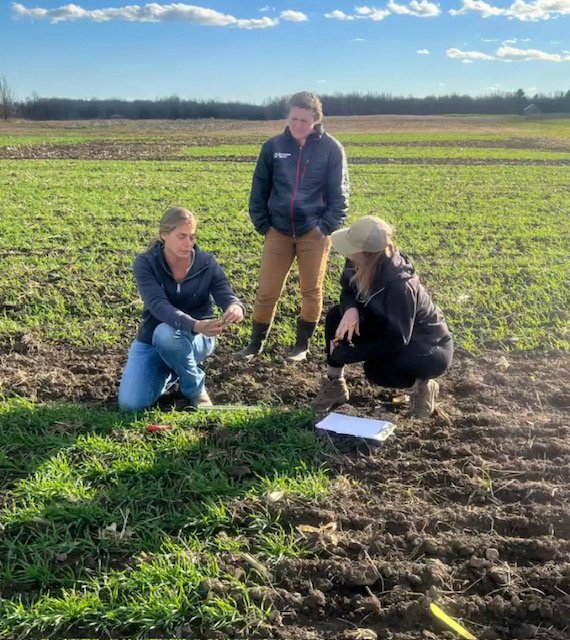
Disease & Pest Management
Growing grains in the Northeast can be problematic. The climate here is often conducive to disease and rot in grain crops, which can yield lower protein and gluten content. Growers must be careful to manage and reduce disease. Here are some resources to help you learn more about specific diseases that may be problematic in the northeast, as well as management techniques:
Northern Corn Leaf Blight (pdf by Dr. Heather Darby, UVM Extension Crops and Soils Team)
Fusarium Head Blight Alert (pdf by Dr. Heather Darby and Erica Cummings, UVM Extension Crops and Soils Team)
Grain Crop Rotations information from the North Dakota State University Extension Service
Seedborne Pathogen Survey of Organic Dry Beans in the Northeastern U.S. 2025 Summarized Report (pdf by Dr. Giovanna Sassi and Dr. Ann Hazelrigg, UVM Plant Diagnostic Clinic and Kellie Damann and Dr. Heather Darby, UVM Extension)
Fusarium can produce a toxin called Deoxynivalenol (DON), which is a vomitoxin that can cause serious health problems. If grains are being grown for human consumption, DON levels cannot be higher than 1 ppm. Grains can be tested at the University of Vermont Wheat Quality Laboratory (see below for more information).
University of Vermont Crops and Soils Program E. E. Cummings Crop Testing Laboratory at the University of Vermont is up and running! Click here to download a Cereal Grain Test Submission Form. The team headed up by Heather Darby, received funding through the Castanea Foundation located in Montpelier, Vermont to purchase a sophisticated machine to test the Falling Number of wheat, an internationally standardized method for sprout damage detection. The Falling Number System measures the alpha-amylase enzyme activity in grains and flour to detect sprout damage, optimize flour enzyme activity and guarantee soundness of traded grain. Alpha-amylase activity is crucial for final product quality of bread, pasta, noodles and malt. For more information on testing the quality of your wheat, contact UVM Extension’s Crops and Soils Team. View a fact sheet on Understanding Falling Number in Cereal Crops.
